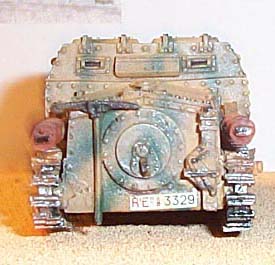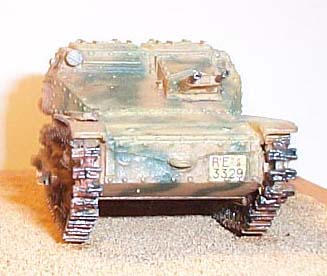KMR 1/35 Italian Carro Armato L3/35 Tankette
By Ray Mehlberger
 |

 |
 Numbers of the CV/33 were sold to Australia, Brazil, Hungary, Bulgaria, and San Salvadore.
Numbers of the CV/33 were sold to Australia, Brazil, Hungary, Bulgaria, and San Salvadore. Years ago, I answered a few ads in the back of Fine Scale Modeler magazine. These were from fellows in other countries who were looking for pen-pals to trade with. One of the modelers I corresponded with lived in Spain. He offered to trade some Spanish resin armor kits from a firm in Spain named KMR.
Years ago, I answered a few ads in the back of Fine Scale Modeler magazine. These were from fellows in other countries who were looking for pen-pals to trade with. One of the modelers I corresponded with lived in Spain. He offered to trade some Spanish resin armor kits from a firm in Spain named KMR. I built the L3/35 straight out of the box. It was put together with the necessary CA superglue of course. I painted it in a deep sand base color and then went over that with red/brown wave pattern camouflage. Markings, on the side, consist of a red rectangle with two white vertical bars. This indicates that it is a tank of the first company, second platoon. The Roman numeral "II", above this rectangle, indicates that this is the 2nd tank in that platoon. The decals in the kit also give the RE license plates.
I built the L3/35 straight out of the box. It was put together with the necessary CA superglue of course. I painted it in a deep sand base color and then went over that with red/brown wave pattern camouflage. Markings, on the side, consist of a red rectangle with two white vertical bars. This indicates that it is a tank of the first company, second platoon. The Roman numeral "II", above this rectangle, indicates that this is the 2nd tank in that platoon. The decals in the kit also give the RE license plates.